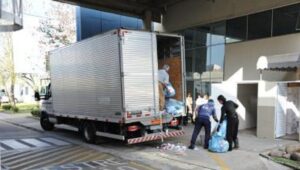The objective of the program for continuous monitoring of the effluents produced at Copel’s facilities is to record and guarantee the regularity of the facilities, ensuring compliance with the legal requirements and the conditioning factors of the environmental licensing of the undertakings, aiming to:
- Monitor the parameters established for the compliance of the discharge of sanitary and industrial effluents; and
- To prevent environmental impacts on the hydric environments associated to the undertakings.
The main benefits of the Effluent Monitoring Program refer to the preservation of the collective health and well-being through the ecological balance of the aquatic environment and water quality.
The monitoring consists in periodic collections from the effluent treatment systems in order to guarantee their efficiency and operationality. The collections are planned taking into consideration the legally established frequency and the specific requirements of the Conditioning Factors of the Operation Licenses of each enterprise.
The physical-chemical and microbiological analyses are carried out by a certified laboratory, which issues laboratory analysis reports and annual reports for a monitoring cycle. The technical management team evaluates and controls the results of the campaigns and, when disagreements or non-conformities with the legislation are verified, it informs the responsible operational area in order to take corrective action in the treatment system, when necessary.
Figure 3 : Collection of drainage well in Mechanical gallery of the plant.
Effluents at Copel
The effluents generated by the Company are categorized into two types, administrative (sanitary) and process (industrial), as explained below:
- Administrative (sanitary – similar to household effluents), of exclusively administrative origin, generated in all facilities;
Sanitary effluents from administrative units are sent to the sewage collection network whenever available. In places where there is no public collection network, treatment takes place through septic tanks and sinks and infiltration ditches, built in accordance with the relevant technical standards. Therefore, the mentioned monitoring does not apply to these systems.
Specifically in large hydroelectric plants and in some PCHs and CGHs where it is unfeasible to install sinks and/or infiltration ditches, the disposal of sanitary effluents after treatment takes place in the water body. It should be noted that these flows are very low compared to the river flow (considering the turbine and spilled flows), so the polluting potential of these discharges is practically zero. Regardless of the irrelevance of this launch, there is qualitative monitoring of these at the exit of the treatment systems.
- Process (Industrial – generated in energy production and transmission processes).
The generation of effluents in Copel GeT’s production process is not understood as relevant in relation to the potential impacts on ecosystems, water resources and society, nor is it relevant in relation to risks in the company’s business.
As detailed in Table 1, for effluents classified as those from the production process (industrial effluents), generation depends on the type of enterprise, highlighting that in wind farms this type does not occur.
Installation Type | Origin of the Effluent | Possible Pollutants | Treatment/Destination |
UHEs, PCHs, CGHs | Effluents from maintenance, washing parts and floors in maintenance workshops; | Oils and Greases, settleable and suspended solids | SAO followed by Infiltration/Collection network/Water body |
Effluents from the turbine cooling system; | Thermal Effluent (Heat) | Leakage Channel / Water Body | |
Effluents from Water-Oil Separator (SAO) systems | Oils and Greases | Water Body | |
UTE Figueira | Effluents from boiler purges; | Oils and Greases, settleable and suspended solids | ETE / Water Body |
Effluents from the cooling system (closed circuit); | Thermal Effluent (Heat) | ||
Effluents from other facilities, including laboratory and yard drainage | Oils and Greases, settleable and suspended solids | ||
Substations | Effluents from Water-Oil Separator (SAO) systems | Oils and Greases | SAO / Soil infiltration / sewage collection network |
Table 1 – Industrial effluents generated at Copel GET
For all process effluents, the presence of oils and greases is not expected under normal operating conditions at the Company’s units. These pollutants will only be found in effluents if atypical situations occur, such as transformer leaks, and even then, only if the Water and Oil Separator System (SAO) is not functioning correctly.





